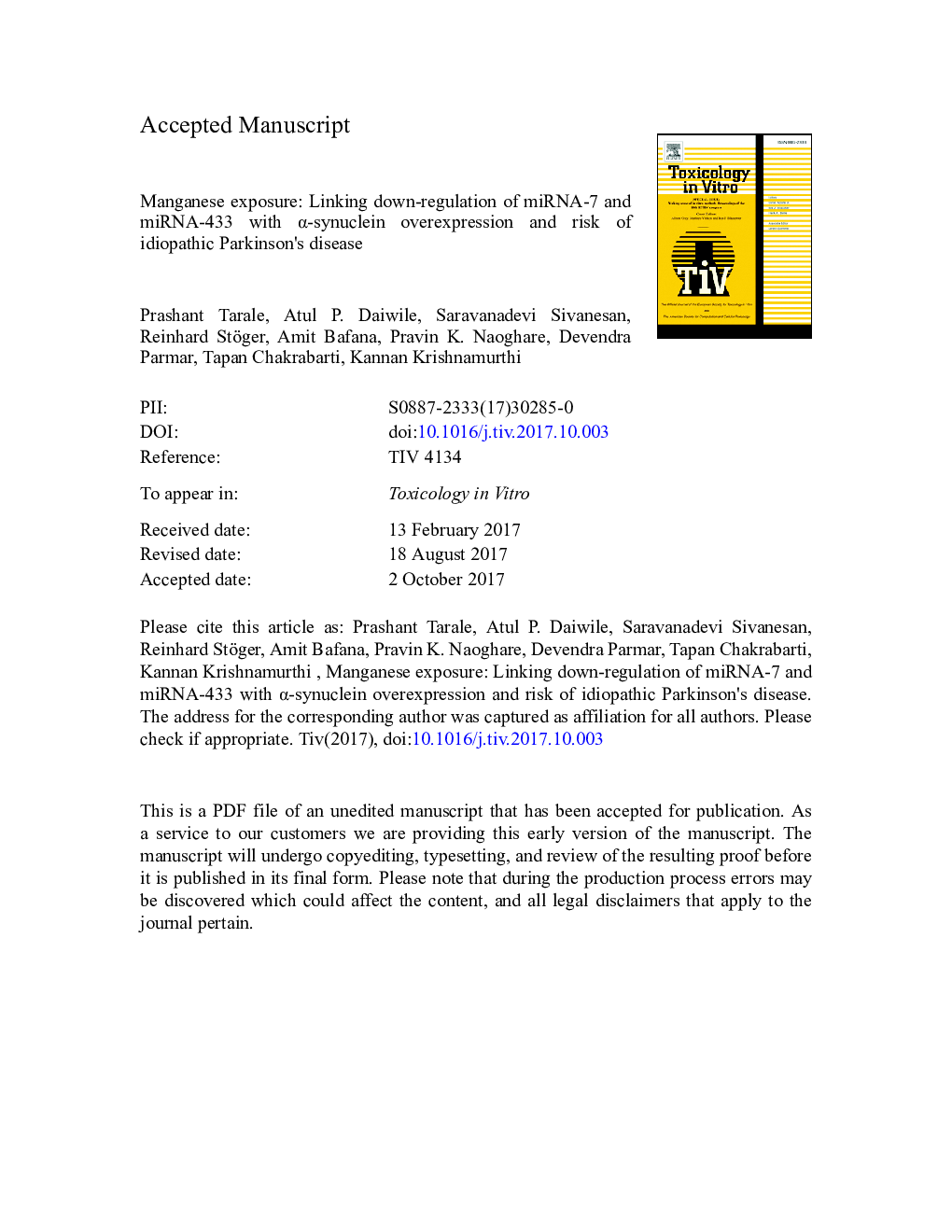| Article ID | Journal | Published Year | Pages | File Type |
|---|---|---|---|---|
| 5562486 | Toxicology in Vitro | 2018 | 30 Pages |
Abstract
Manganese is an essential trace element however elevated environmental and occupational exposure to this element has been correlated with neurotoxicity symptoms clinically identical to idiopathic Parkinson's disease. In the present study we chronically exposed human neuroblastoma SH-SY5Y cells to manganese (100 μM) and carried out expression profiling of miRNAs known to modulate neuronal differentiation and neurodegeneration. The miRNA PCR array results reveal alterations in expression levels of miRNAs, which have previously been associated with the regulation of synaptic transmission and apoptosis. The expressions of miR-7 and miR-433 significantly reduced upon manganese exposure. By in silico homology analysis we identified SNCA and FGF-20as targets of miR-7 and miR-433. We demonstrate an inverse correlation in expression levels where reduction in these two miRNAs causes increases in SNCA and FGF-20. Transient transfection of SH-SY5Y cells with miR-7 and miR-433 mimics resulted in down regulation of SNCA and FGF-20 mRNA levels. Our study is the first to uncover the potential link between manganese exposure, altered miRNA expression and parkinsonism: manganese exposure causes overexpression of SNCA and FGF-20 by diminishing miR-7 and miR-433 levels. These miRNAs may be considered critical for protection from manganese induced neurotoxic mechanism and hence as potential therapeutic targets.
Keywords
Related Topics
Life Sciences
Environmental Science
Health, Toxicology and Mutagenesis
Authors
Prashant Tarale, Atul P. Daiwile, Saravanadevi Sivanesan, Reinhard Stöger, Amit Bafana, Pravin K. Naoghare, Devendra Parmar, Tapan Chakrabarti, Kannan Krishnamurthi,
